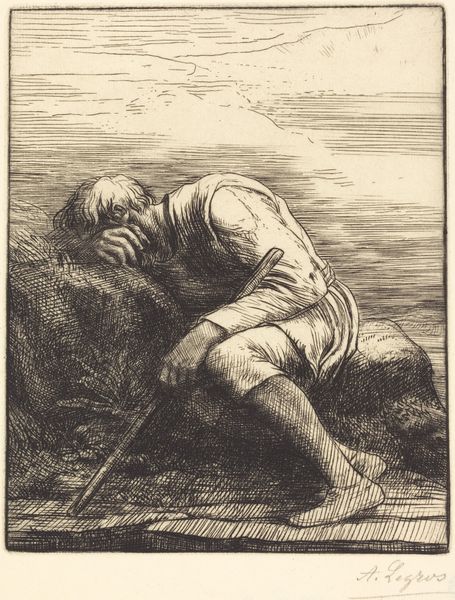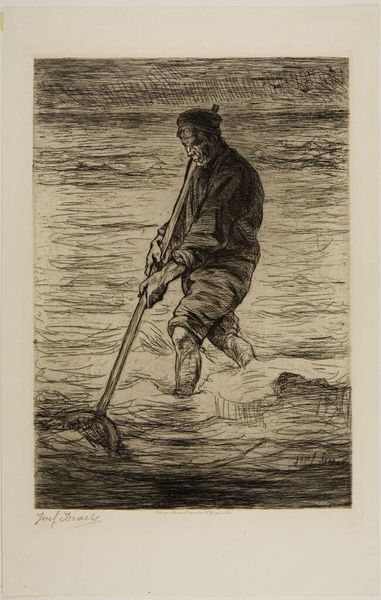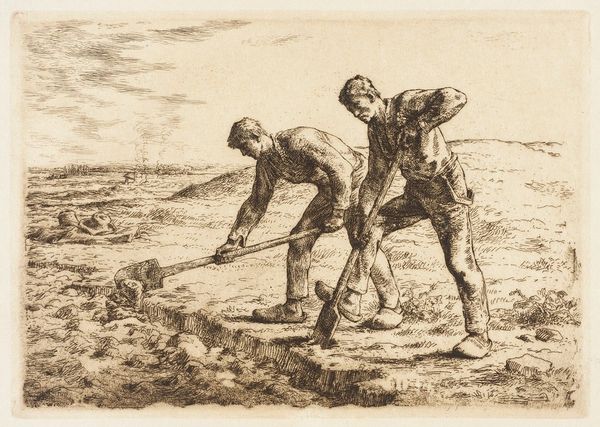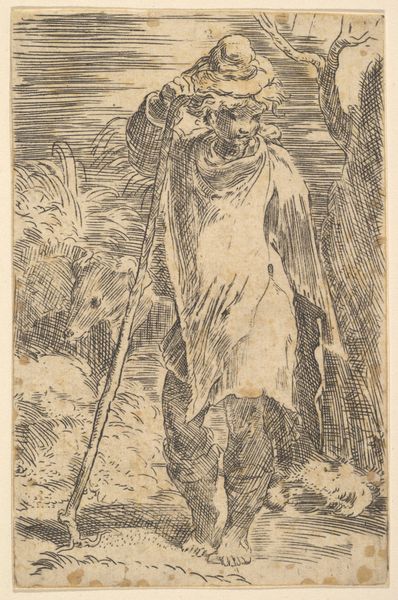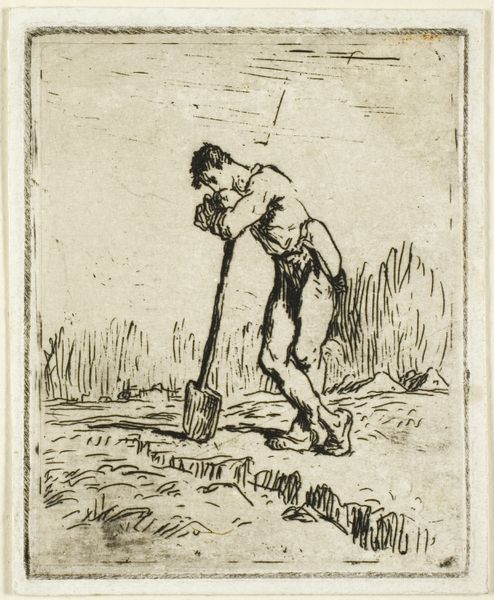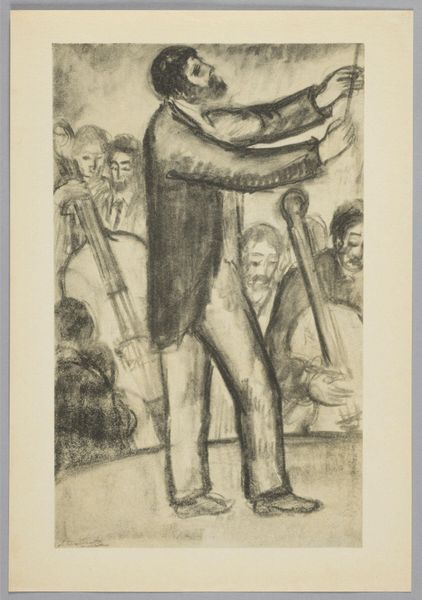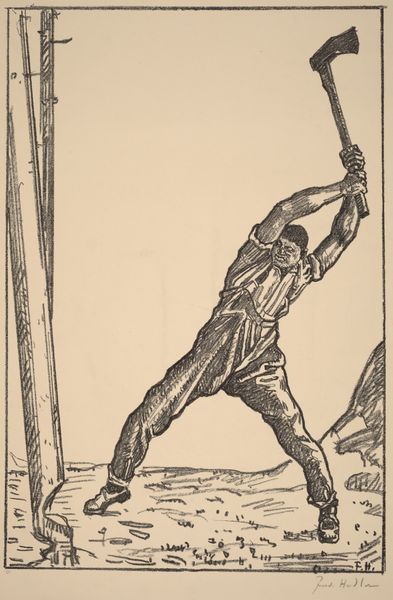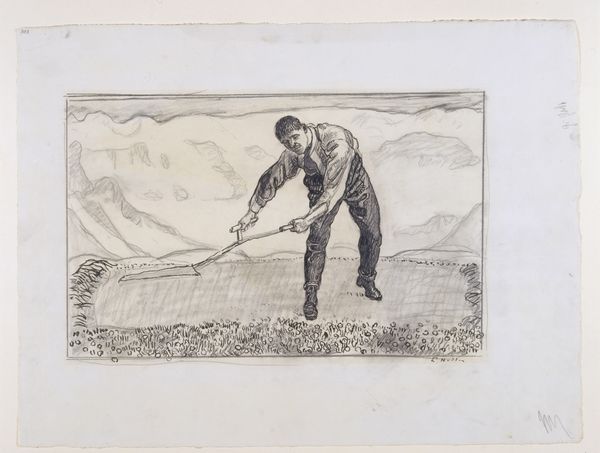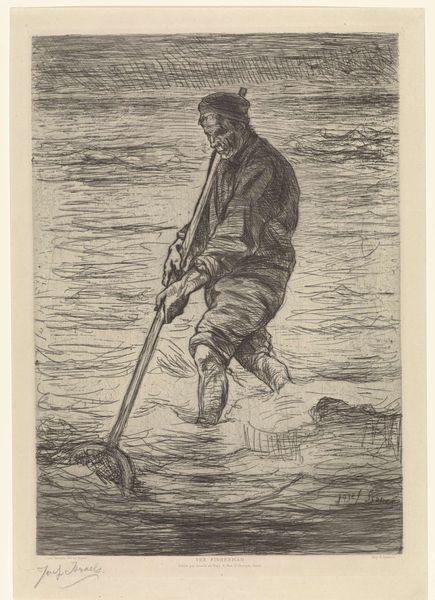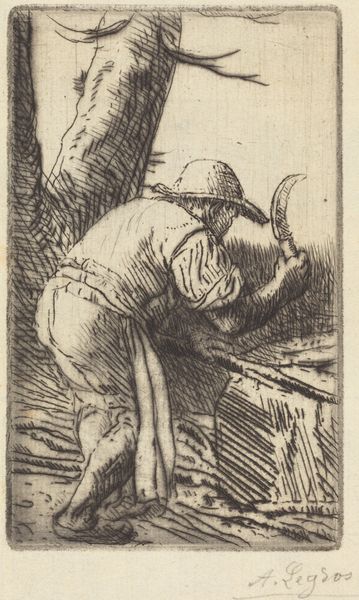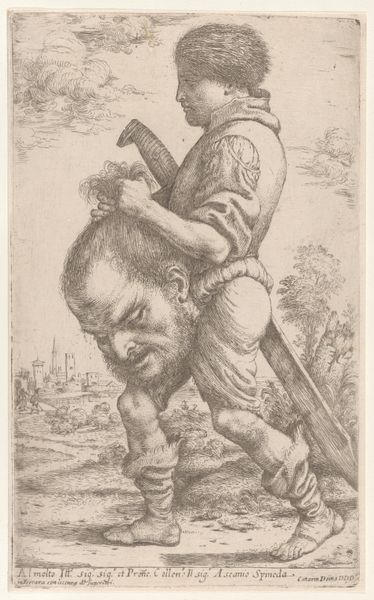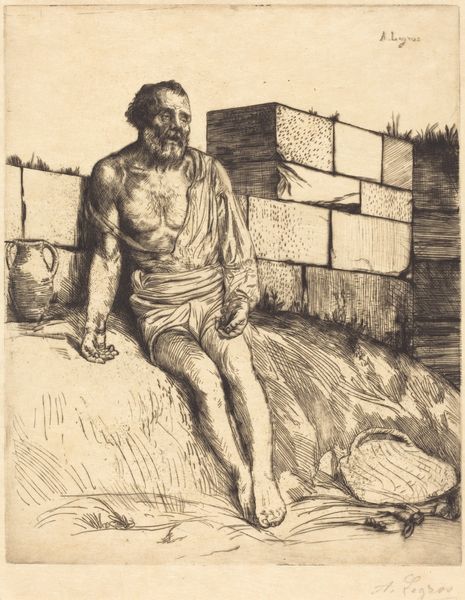
drawing, print, charcoal
#
portrait
#
drawing
# print
#
charcoal drawing
#
charcoal
#
realism
Dimensions: height 318 mm, width 178 mm
Copyright: Rijks Museum: Open Domain
Curator: Standing before us is “Homme de Peine,” a compelling 1901 print and charcoal drawing by Pieter Dupont. The artist captures a labourer in incredible detail. Editor: It’s powerfully somber, isn't it? The hunched figure and raw depiction of manual labour evoke a sense of weariness, almost hopelessness. You feel the weight of the work in the shading alone. Curator: Dupont uses charcoal with remarkable effect, wouldn’t you agree? It contributes to the depth and drama and almost seems like he’s trying to capture the subject’s internal exhaustion with every stroke. Considering it’s rendered with dark medium, I see echoes of archetypal images of labourers performing endless labour from stories like Sisyphus or biblical figures. Editor: Absolutely, I'm particularly drawn to how this realism places labour and the working class squarely within the art historical canon, a space often reserved for nobility or mythologized subjects. The backdrop, too, suggests urban expansion perhaps at the cost of the working man's well-being. The bridge hints at progress but feels distant, unobtainable, for him. Curator: It does make you question progress when considering individual realities. I see that echoed in the man’s downward gaze; perhaps the labourer isn’t simply avoiding eye contact. Maybe he symbolizes that social reality and a system that denies workers their deserved acknowledgment. Editor: Agreed, the composition itself reinforces a hierarchy, though, between those who perform manual labour and those who presumably benefit from it. “Homme de Peine,” isn’t just a study in charcoal; it’s an observation on power, class, and marginalization. Curator: By representing toil so earnestly, Dupont has perhaps created more than just an image, but a symbol capable of engaging discussions relevant to today’s society, similar to how icons transcend their literal depictions to become vehicles for larger ideas. Editor: It encourages us to view art as a catalyst for conversation on social consciousness. Let's not only see art, but also question how the society interacts with inequality.
Comments
No comments
Be the first to comment and join the conversation on the ultimate creative platform.
